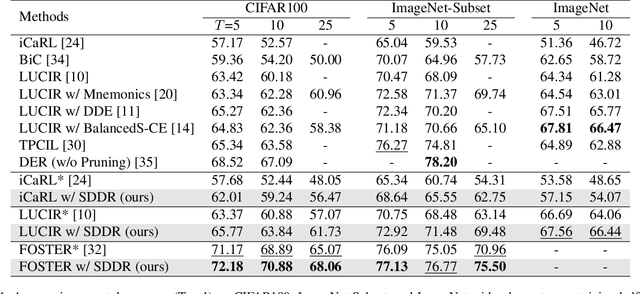Yin Jun Phua
Variable Assignment Invariant Neural Networks for Learning Logic Programs
Aug 20, 2024Abstract:Learning from interpretation transition (LFIT) is a framework for learning rules from observed state transitions. LFIT has been implemented in purely symbolic algorithms, but they are unable to deal with noise or generalize to unobserved transitions. Rule extraction based neural network methods suffer from overfitting, while more general implementation that categorize rules suffer from combinatorial explosion. In this paper, we introduce a technique to leverage variable permutation invariance inherent in symbolic domains. Our technique ensures that the permutation and the naming of the variables would not affect the results. We demonstrate the effectiveness and the scalability of this method with various experiments. Our code is publicly available at https://github.com/phuayj/delta-lfit-2
DEGNN: Dual Experts Graph Neural Network Handling Both Edge and Node Feature Noise
Apr 14, 2024Abstract:Graph Neural Networks (GNNs) have achieved notable success in various applications over graph data. However, recent research has revealed that real-world graphs often contain noise, and GNNs are susceptible to noise in the graph. To address this issue, several Graph Structure Learning (GSL) models have been introduced. While GSL models are tailored to enhance robustness against edge noise through edge reconstruction, a significant limitation surfaces: their high reliance on node features. This inherent dependence amplifies their susceptibility to noise within node features. Recognizing this vulnerability, we present DEGNN, a novel GNN model designed to adeptly mitigate noise in both edges and node features. The core idea of DEGNN is to design two separate experts: an edge expert and a node feature expert. These experts utilize self-supervised learning techniques to produce modified edges and node features. Leveraging these modified representations, DEGNN subsequently addresses downstream tasks, ensuring robustness against noise present in both edges and node features of real-world graphs. Notably, the modification process can be trained end-to-end, empowering DEGNN to adjust dynamically and achieves optimal edge and node representations for specific tasks. Comprehensive experiments demonstrate DEGNN's efficacy in managing noise, both in original real-world graphs and in graphs with synthetic noise.
Future-Proofing Class Incremental Learning
Apr 04, 2024Abstract:Exemplar-Free Class Incremental Learning is a highly challenging setting where replay memory is unavailable. Methods relying on frozen feature extractors have drawn attention recently in this setting due to their impressive performances and lower computational costs. However, those methods are highly dependent on the data used to train the feature extractor and may struggle when an insufficient amount of classes are available during the first incremental step. To overcome this limitation, we propose to use a pre-trained text-to-image diffusion model in order to generate synthetic images of future classes and use them to train the feature extractor. Experiments on the standard benchmarks CIFAR100 and ImageNet-Subset demonstrate that our proposed method can be used to improve state-of-the-art methods for exemplar-free class incremental learning, especially in the most difficult settings where the first incremental step only contains few classes. Moreover, we show that using synthetic samples of future classes achieves higher performance than using real data from different classes, paving the way for better and less costly pre-training methods for incremental learning.
Class-Incremental Learning using Diffusion Model for Distillation and Replay
Jun 30, 2023



Abstract:Class-incremental learning aims to learn new classes in an incremental fashion without forgetting the previously learned ones. Several research works have shown how additional data can be used by incremental models to help mitigate catastrophic forgetting. In this work, following the recent breakthrough in text-to-image generative models and their wide distribution, we propose the use of a pretrained Stable Diffusion model as a source of additional data for class-incremental learning. Compared to competitive methods that rely on external, often unlabeled, datasets of real images, our approach can generate synthetic samples belonging to the same classes as the previously encountered images. This allows us to use those additional data samples not only in the distillation loss but also for replay in the classification loss. Experiments on the competitive benchmarks CIFAR100, ImageNet-Subset, and ImageNet demonstrate how this new approach can be used to further improve the performance of state-of-the-art methods for class-incremental learning on large scale datasets.
 Add to Chrome
Add to Chrome Add to Firefox
Add to Firefox Add to Edge
Add to Edge